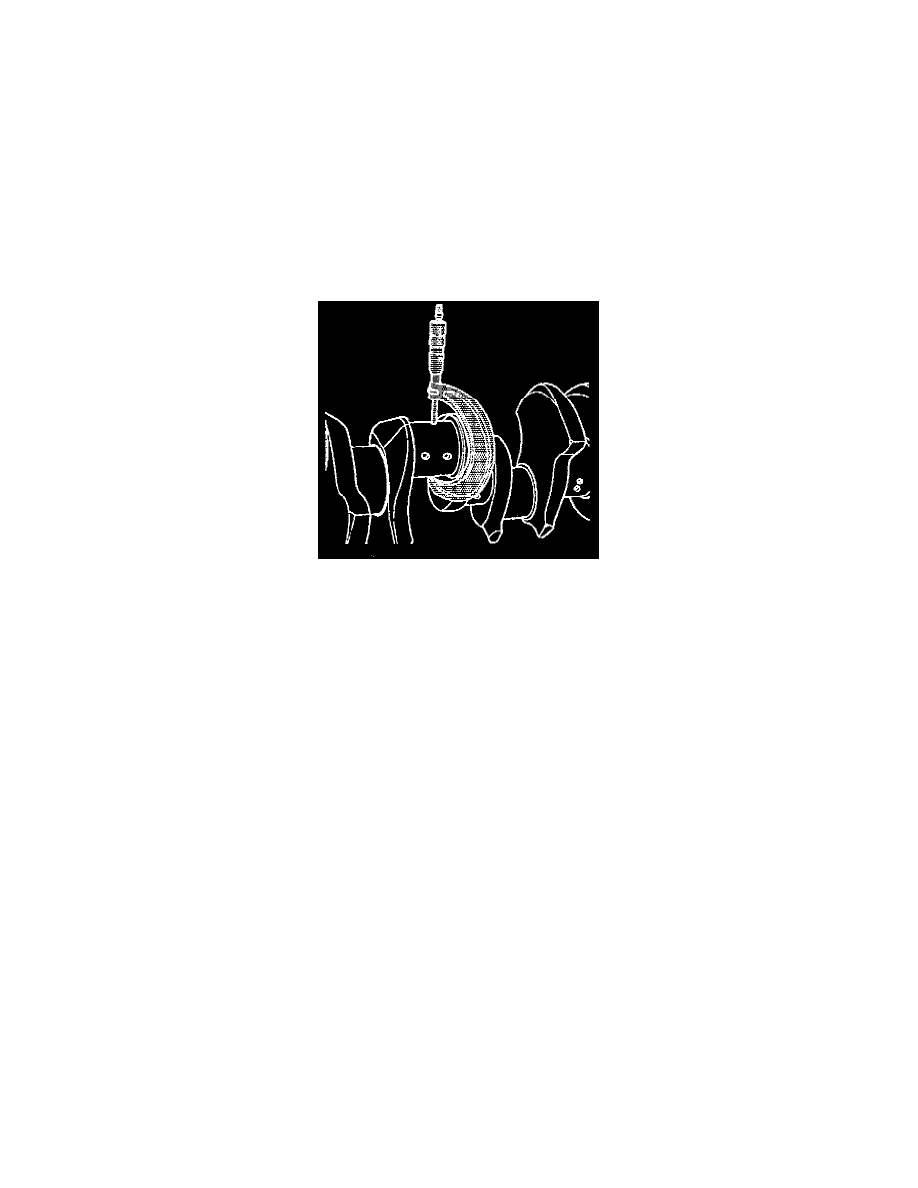K 2500 Truck 4WD V8-454 7.4L VIN J SFI (1997)

Crankshaft Main Bearing: Testing and Inspection
Bearing Clearance Measuring
The crankshaft bearings are of the precision insert type and do not use shims for adjustment. If the clearances are excessive, the new upper and the
lower bearings will be: required. The service bearings are available in the standard size and an undersize.
^
0.001 inch
^
0.002 inch
^
0.010 inch
^
0.020 inch
The selective fitting of the-crankshaft bearings are necessary in production in order to obtain close tolerances. For this reason, you may use one-half of
a standard crankshaft bearing with one-half of a undersize crankshaft bearing.
In order to determine the correct replacement bearing size, the bearing clearance must be measured accurately. Either the micrometer or plastic gauge
method may be used, however, the micrometer method gives more reliable results and is preferred.
Micrometer Method
CAUTION: Do not shim, scrape, or file bearing inserts. Do not touch the bearing surface of the insert with bare fingers. Skin oil and acids
will etch the bearing surface.
1. Measure the crankshaft main journal diameter with a micrometer in several places, approximately 90 degrees apart, and average the
measurements.
2. Compute the taper and the out of round.
3. Install the crankshaft bearings into the crankshaft bearing cap and the engine block.
CAUTION: In order to prevent the possibility of cylinder block or crankshaft bearing cap damage, the crankshaft bearing caps are tapped
into the cylinder block cavity using a brass, lead, or a leather mallet before the attaching bolts are installed. Do not use attaching bolts to pull
the crankshaft bearing caps into the seats. Failure to observe this information may damage a cylinder block or a bearing cap.
4. Install the crankshaft bearing caps and the bolts. Ensure that the arrows on the crankshaft bearing caps are facing the front of the engine.
NOTE: Tighten inside bearing cap bolts first and outside bearing cap bolts last.
^
Tighten the bolts to 135 Nm (100 ft. lbs.).
5. Measure the bearing inside diameter (ID) using an inside micrometer.
6. Compare the crankshaft bearing clearance specifications.
7. If the bearing clearance is within specifications, the bearing is satisfactory. If the clearance is not within specifications, replace the bearing.
Always replace both the upper and the lower bearings as a unit.
8. A standard or undersize bearing combination may result in the proper clearance. If the proper bearing clearance cannot be achieved using the
standard or the undersize bearings, it will be necessary to replace or repair the crankshaft.
